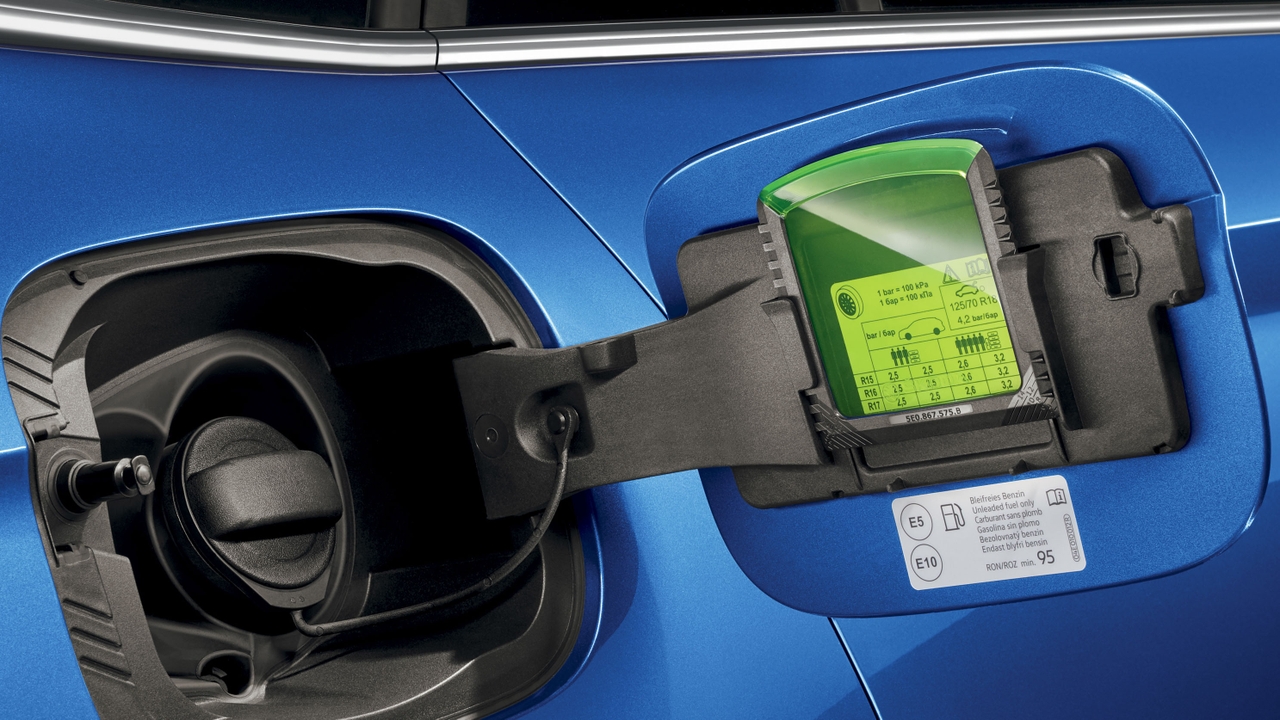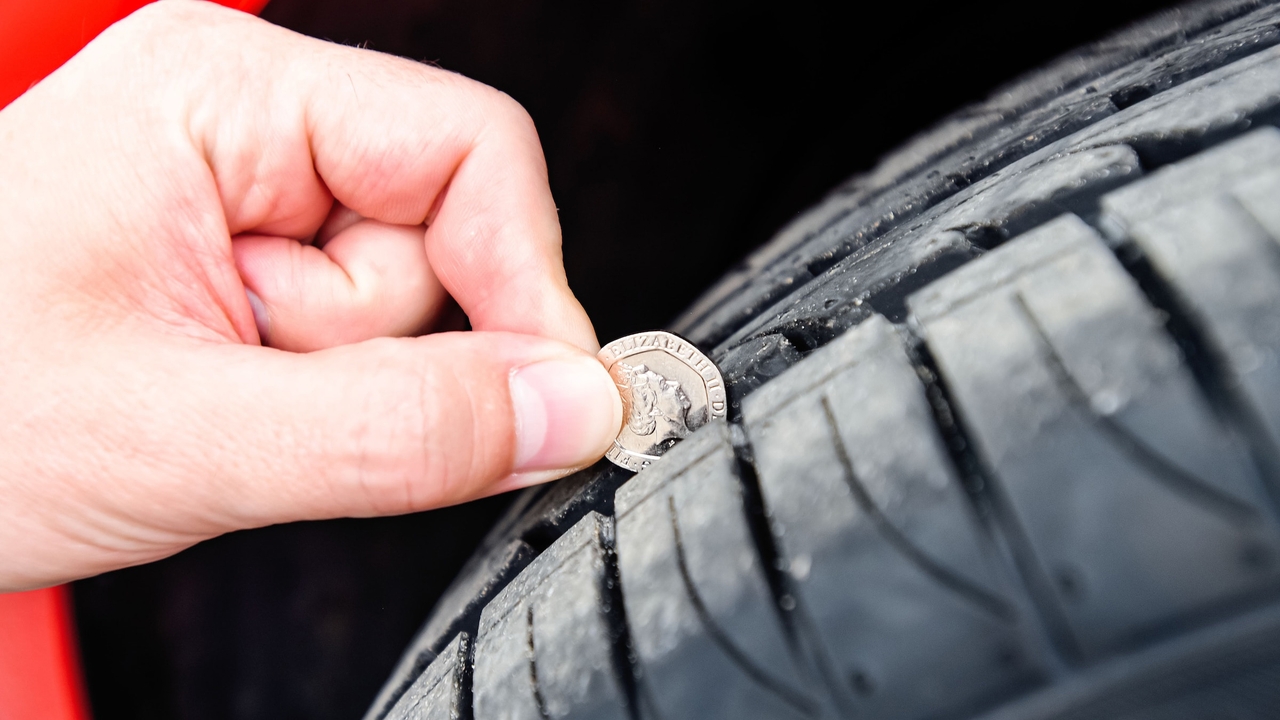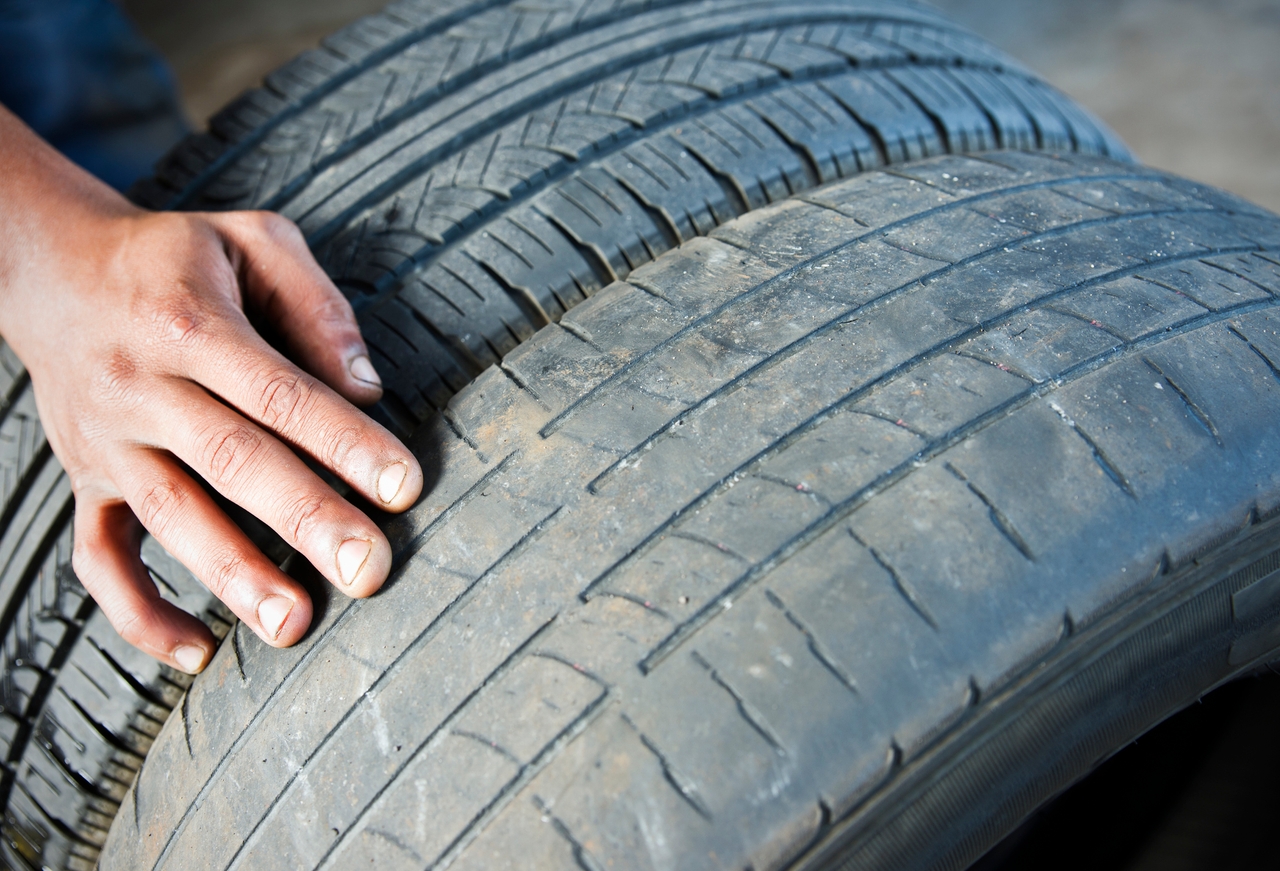Minimise the dangers of worn-out tyres by giving them the attention that they deserve. Here are some car tyre maintenance tips to keep them at their best
Your tyres are the only point of contact between your car and the road. It’s easy to overlook them, but it’s important to keep them in top condition – you could be putting yourself and other road users at risk if you don’t.
Maybe you’re not sure how to check your tyres, or what exactly you should be looking for. We’ll show you how to know your tyres are safe and legal, and how to maintain your tyres to get as much life out of them as possible.
- How to check tyre pressures
- How to find tyre pressures
- How to check your tyre’s tread depth
- How to check tyre condition
- What does a bald tyre look like?
- How to maintain car tyres
How to check tyre pressure
Whether over or under-inflated, tyre pressure can massively affect your car’s:
- Steering
- Handling
- Fuel consumption
- Braking
- Mileage (the odometer reading)
Incorrect pressure can also cause excess wear and tear which, over time, may result in a blowout and a loss of control of the car. So it’s well worth a couple of minutes and some loose change at a petrol station air machine every now and then.
You can avoid damage and unplanned stops by checking your tyre pressure, including your spare tyre (if fitted), at least once a month. If you don’t manage to stick to this routine, be sure to check the pressure before long journeys or if your car is carrying particularly heavy loads.

Many modern cars now feature dashboard lights highlighting issues with tyre pressure. If you notice the TPMS (Tyre Pressure Monitoring System) icon on your dashboard, it could be a sign your tyre is over or under-inflated. However, these systems can sometimes throw up false positives, for example in cold weather or if a sensor is faulty, so it’s best to check for yourself on a semi-regular basis.
Your tyres’ pressures can be checked at your local petrol station or using your own pressure gauge at home. For best results and the most accurate reading, check the tyres when they're cold – not after you’ve driven somewhere.
Simply unscrew the dust caps from your tyre valves, attach the nozzle to the valve and start pumping. It’s normal to hear the sound of air escaping while you attach the nozzle but, once it’s properly fastened, you shouldn’t hear any air noise. If you do, it’s a sign that the nozzle isn’t attached to the valve properly.
How to find my tyre pressure
Now you know how to inflate a tyre, you’ll need to know how much air the tyre needs. And that varies from car to car, and even with the size of your wheels. But all cars have a recommended tyre pressure, usually shown in bar and PSI measurements. There will often be a couple of different figures listed – one for when the car’s lightly loaded, and one for when the car is fully laden with people and luggage.

The figures might also be different for the front and rear tyres – which you’ll need to bear in mind if you’ve rotated your tyres (swapped your wheels from front to rear, or vice versa).
Check for a sticker inside the door openings or the fuel filler flap. If you can’t find them there, the car’s handbook should show recommended tyre pressure figures – use the index to quickly locate them.
How to check your tyre tread depth
You need enough tread depth for proper performance in poor weather conditions. If the tread is too shallow or worn out, then your tyres won’t provide the necessary level of grip, and you’ll also be breaking the law. Anything below the legal minimum depth of 1.6mm across the middle three-quarters of the tyre can result in points on your licence and a fine of up to £10,000. You’ll also fail your MOT test if they’re below the limit.
Most tyres have a wear indicator in the grooves – it feels like a little hard bump in the groove and is 1.6mm tall. If the wear indicator is lower than the tyre tread, you’ve got enough tread left, but if the indicator is the same height as the tyre tread, you need to get the tyre replaced.
How to check tyre tread with 20p

Another easy way to check your tyre treads is to place a 20p coin into the grooves. If the outer band of the 20p coin is fully obscured, then you’re operating with a safe tread depth.
How to check tyre condition
Your tyres face their fair share of glass, stones and other roadside debris, so it’s important to give them a once-over for any signs of damage. If you notice any cuts, puncture marks or bulges, then be sure to get them checked by a professional as soon as possible and repaired if needed. In some cases, the tyre will need replacing outright.
If any punctures occur while driving, then replace the tyre with a spare if possible before driving to the nearest garage. Spare tyres are designed only for temporary use, so they should be swapped with a regular one as soon as you can.
Many modern cars only come with a can of tyre repair foam, which has instructions on how to use it. Consider giving this a read before you need it, unless you want to spend time figuring out how it works on the side of a busy road on a wet, wintry evening.
It’s vital to remember to adjust your driving if you’re using a spare tyre. The majority of spare tyres are considerably thinner than traditional tyres and should not be driven over 50mph. Spare tyres also affect handling and braking characteristics, and may confuse the car’s driver assistance technology.
It’s also worth remembering that tyres should be replaced every few years, even if they appear to be in good condition. You’ll find a four-digit code on your tyres that tells you when they were made – 0824 means the tyres were made in the eighth week of 2024, for example. This is because the rubber in older tyres can perish over time and become more prone to failure.
What does a bald tyre look like?

A bald tyre looks smooth and the tread pattern isn’t very noticeable. See how different the tyres look in this photo? It’s a comparison between a new tyre and a worn-out tyre that should’ve been replaced a long time ago.
Road tyres aren’t meant to be smooth. They have patterned grooves to channel water away and maximise grip. A bald tyre with worn-out tread won’t be able to displace the water when driving in rain, leading to an increased risk of aquaplaning.
How to maintain car tyres
Aligning and balancing
Aligning your tyres means your car handles as it should and reduces wear and tear on its tyres. Similarly, balancing your wheels ensures they make contact evenly on the road’s surface, so no tyre becomes more worn than the others.
If you feel a pulling sensation to the left or right, or feel an unusual steering wheel vibration, then you may need to have your wheels aligned or balanced. Take it to a garage to get things properly checked out if this is the case.
Try not to hit the kerb

When you’re pulling up to park on a busy street or swerve to avoid something on the road, mounting the kerb can sometimes be unavoidable. But repeatedly manoeuvring your car in this way can cause your tyre’s sidewall to become pinched between the kerb and the wheel, causing them to weaken and increase the risk of a blowout.
Try to avoid mounting the kerb altogether but, if you absolutely cannot avoid it, at least be careful in your approach. Climb the kerb slowly with as much of the tyre facing the kerb as possible, and try not to scrape up the side of the pavement to avoid damaging your tyres and alloys.
Rotate wheels when necessary
If you’ve purchased a set of tyres, it’s a good idea to get in the habit of swapping the fronts and the rears and repeating this cycle to ensure a more even wear out of their tread lifespan. It’s recommended you do this every six months or every 6,000 miles you’ve travelled – whichever one comes first – as a guideline. If you’re unsure doing this yourself, then it’s a good idea to take it to a garage so they can do it for you.
This can also be a good opportunity to switch between your summer and winter tyre sets if the season’s getting colder. Especially if you live in an area which receives harsh weather, fitting winter tyres could give you greater grip and on snowy and icy roads. Just be sure to note the positions of the summer tyres you’re removing, so they can be refitted in a rotated position come spring.
Practise good driving habits
Simply practising good driving habits can help out massively too. Excessive braking or acceleration while driving, or constantly stopping and starting in traffic, for example, can be terrible for your tyres, causing them to wear out in a much quicker manner.
It’s a good idea then, to drive as smoothly as possible, trying to predict the movement of traffic around you. Avoid bumpy surfaces and hazards such as potholes, and make sure you slow down for speed bumps to prevent the wheels from becoming unbalanced.



































